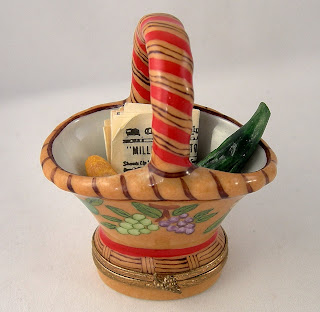

In early 17th Century France fresh herbs and flowers were gathered and used to make potpourri which was set out in special pots to perfume the air in their palaces and cottages. Potpourri is made by mixing oils, leaves, and/or dried flowers. When prepared, the mixture is enclosed in a bottle or jar, and allowed to sit for several weeks. During this time, the potpourri may smell rotten, however it soon improves.
The word "pot" in French has the same meaning
as it does in English, while the word "pourri" means rotten. The term "rotten pot" probably refers to some fermenting which may enhance the natural fragrances of a potpourri's  ingredients.
ingredients.
 ingredients.
ingredients.In ceramics manufacturing, a potpourri vase is a vase specifically designed for holding potpourri. In the traditional designs a potpourri container is provided with a pierced fitted lid, through which the scent may slowly diffuse. This pretty potpourri diffuser is a trunk shaped Limoges Box made by Chamart with a porcelain top hand decorated with a pansy design and a pierced metal bottom in which to place scented potpourri.







